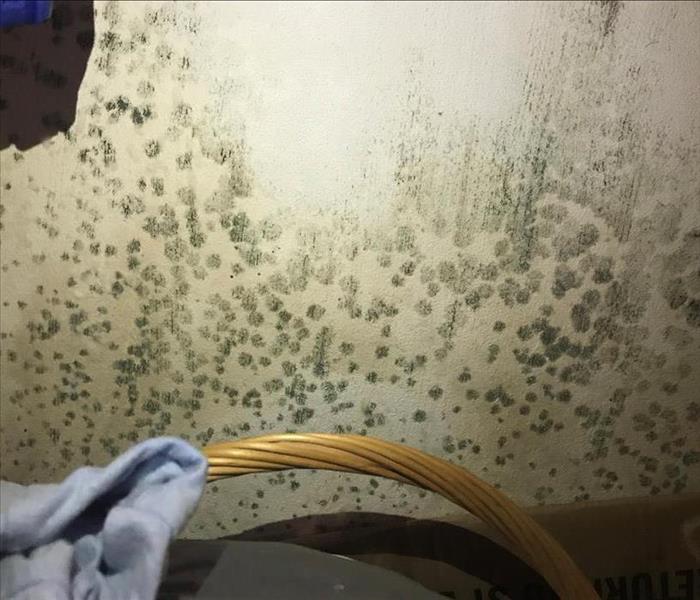What is Microbial Contamination?
6/3/2019 (Permalink)
What is Microbial Contamination? Where does mold come from? Is microbial contamination a health concern issue? How do you properly get rid of a microbial contamination?
Microbial contamination refers to a variety of microorganisms, including mold, bacteria, viruses and protozoa; and fungi, which includes molds, yeasts, and their by products and toxins. All of these can affect the health of a building and its occupants.
As a starting point the proper job sequencing for a typical microbial-remediation project includes but it not limited to: identifying and stopping the source of moisture; setting up containment; establishing negative air; removing contaminated building materials; cleaning surfaces; drying the affected areas; conducting a post remediation evaluation.
Mold spores are a major concern for our project managers. Because of their very small size, mold spores can be anywhere there is air, including under carpet, inside wall cavities, under kitchen cabinets, virtually everywhere. Molds are usually not a problem unless mold spores land on a damp spot and begin growing. They digest whatever organic material they grow on in order to survive. Some molds grow on wood, paper, carpet, foods and insulation, while other molds feast on the everyday dust and dirt that gather in the moist regions of a building. Generally mold spores are hydrophobic. This means that spores do not like water itself. While mold spores need water to colonize (germinate and grow), they like wet organic substances, not a puddle of standing water.





 24/7 Emergency Service
24/7 Emergency Service